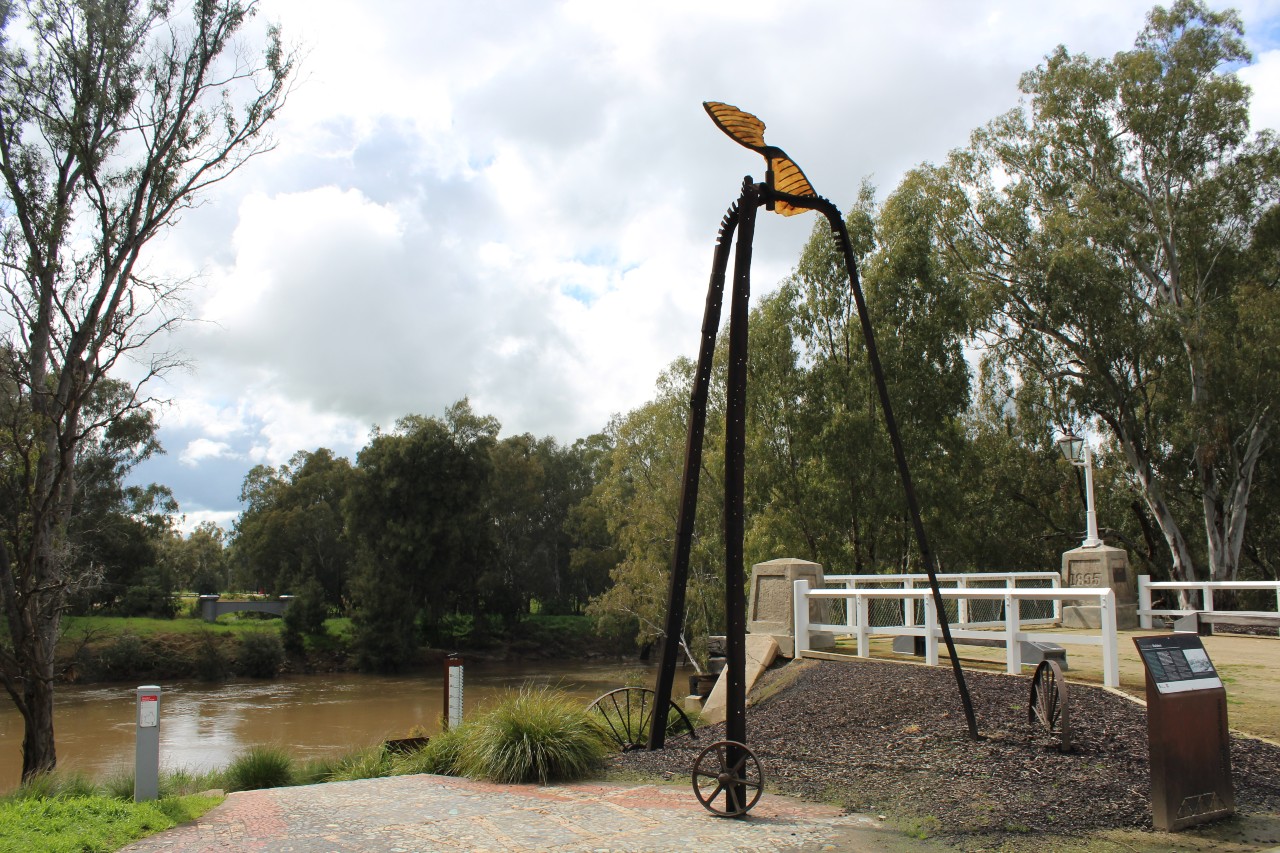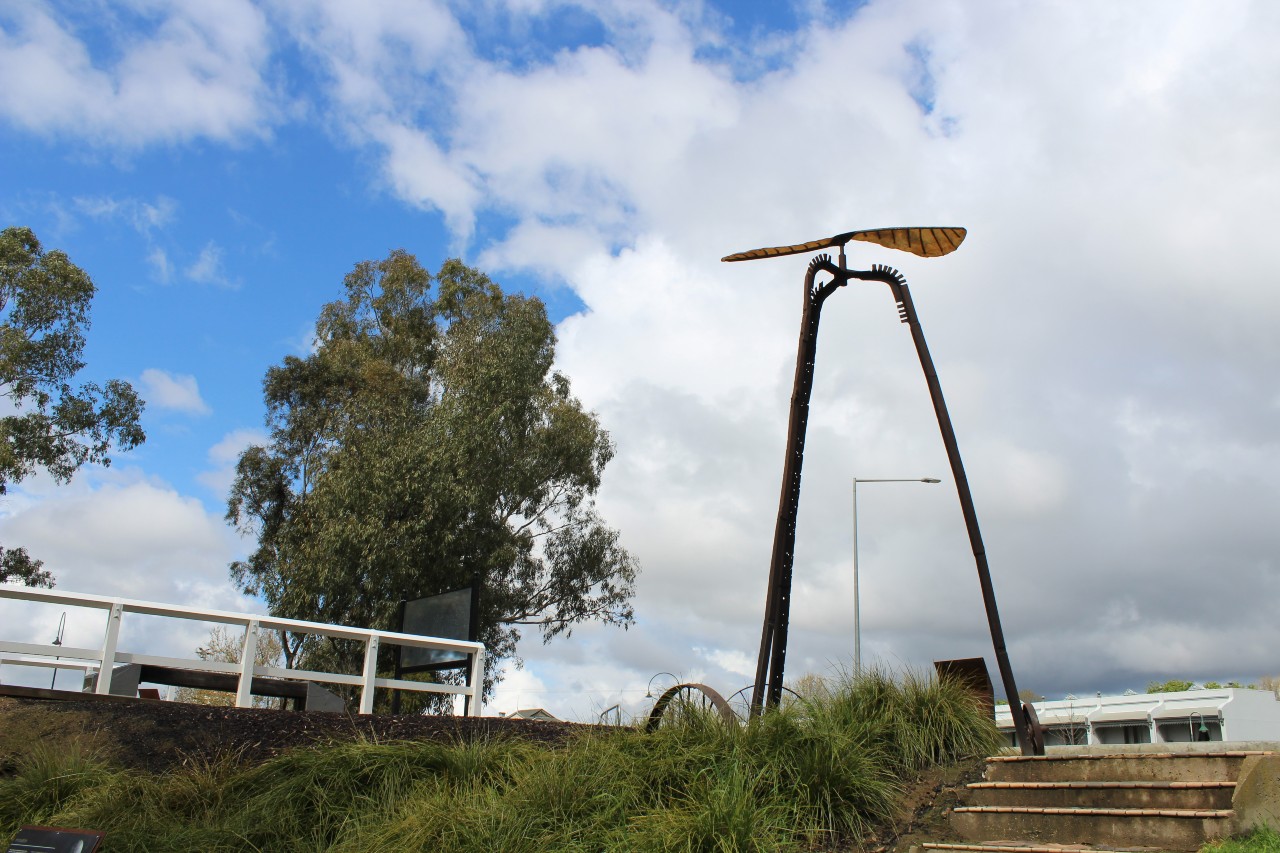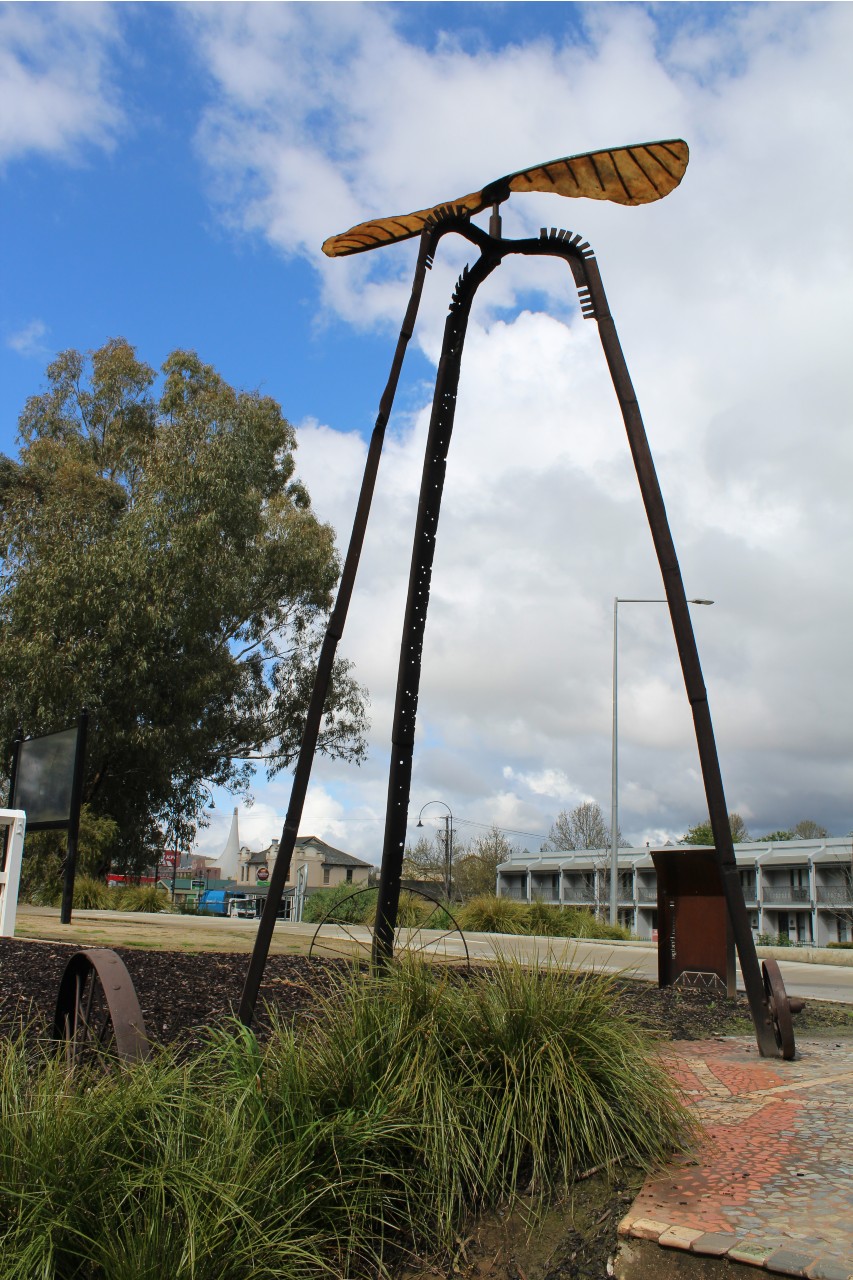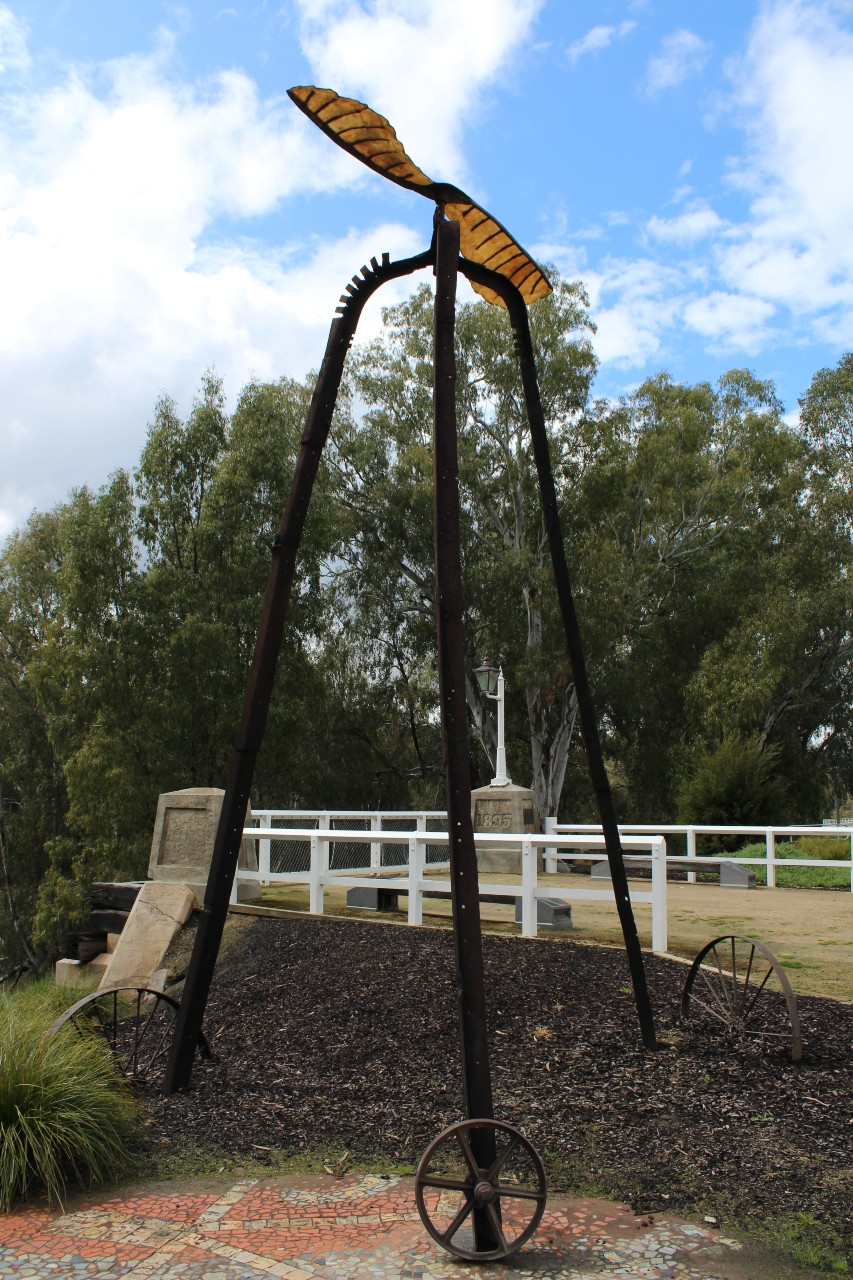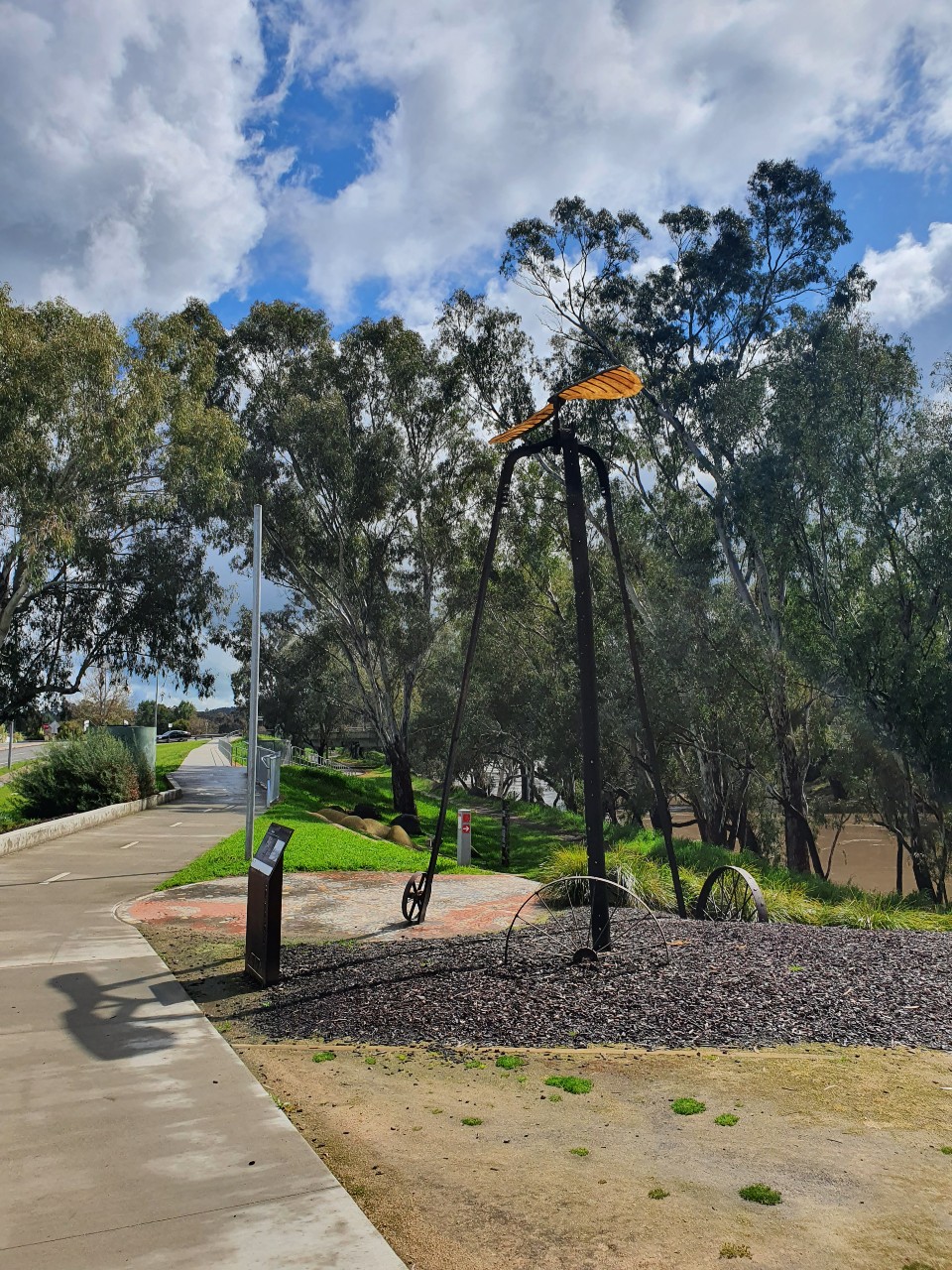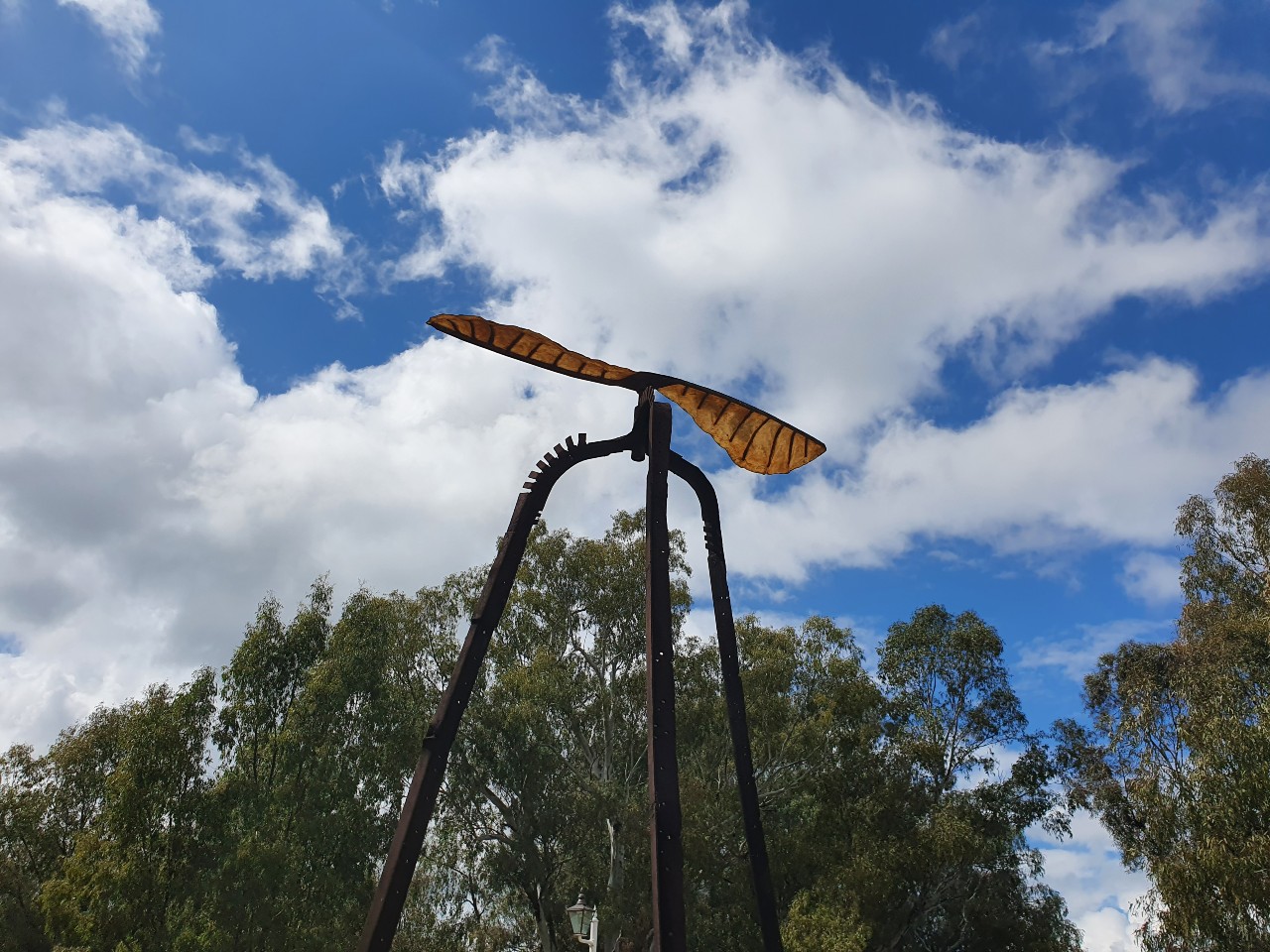Welded high-tensile steel, farm wheels, machined bearing parts, fibreglass membrane.
Levee bank near site of former Hampden Bridge, Wagga Wagga
Public Art Audio Trail
Episode 5: Event on the Riverbank towards the End of the 20th Century
Audio visual description:
Acknowledgement spoken by Bernard Higgins.
Narration, content and interview by Ashleigh Adams.
Sound and music by Sam Webber Sound.
Episode 5: Event on the Riverbank Towards the End of the 20th Century
A slow drum beat starts, with electronic, sci-fi sounds joining the rhythm. Music plays through to the end of the episode.
The sound of an aircraft flying overhead and crash landing is heard.
Welcome to the sculpture park and Hampden Bridge Legacy Area. Sitting proudly at the entrance to the park is a 6-meter-tall sculpture titled ‘Event on the Riverbank Towards the End of the 20th Century’. This work is by acclaimed local artist Arthur Wicks. Arthur is renowned for his sculptural machines, and this looks like a piece of technology from another time. As we approach the work, we start to theorize how this machine ended up here, and what its function might be.
Now, let’s hear from artist Arthur Wicks, who is going to tell us the story behind this incredible sculpture:
Narrator: What does the name ‘Event on the Riverbank Towards the end of the 20th Century’ mean?
Arthur: Well it was constructed in 1996, which was only a few years ahead of the 21st century, end of the 20th. I had been making objects involving rotors, helicopters, skeletal helicopter, a few years earlier and the idea of having an object sort of a bit like an Icarus object having flown to close too the sun, having dropped out of the sky and landed heavily onto the soil here at Wagga, on the riverbank of the Murrumbidgee River.
Narrator: How did the location of the river bank inspire the design of this sculpture?
Arthur: Well the riverbank area is in fact the river park and you will see that there are seats, its like an amphitheatre built into the side of riverbank and this was simply an object which marked the highpoint of the at that point of the levee.
Narrator: How do you choose these unlikely materials for your sculptures?
Arthur: Well, that was a very easy because I needed high tensile steel to give the appearance, give the sense of fragility, that is this object having been up high maybe close to the sun has somehow been transformed metamorphose into something else that sort of fell onto the riverbank. So the object itself, had to reflect the fragility, but at the same time it had to survive, it had to sustain its own structure and high tensile steel which was very difficult to work with I might say, was needed and in high winds the actual structure will slightly vibrate and wobble a little bit as the rotors periodically turn.
Is ‘Event on the Riverbank Towards the End of the 20th Century’ a post-apocalyptic contraption? Or is it something from another realm that has crash-landed here on the banks of the Murrumbidgee River? We will never know where this mysterious machine has come from, but since 1996 it has called this place by the river its home. While you’re here, look out for other public artworks, and sample a piece of history. See if you can spot the rock woman sleeping peacefully on the steps, or see where the salvaged elements of Wagga Wagga’s historic Hampden bridge connects the city’s past with the future.
There is still plenty more to see along Fitzmaurice Street, a vibrant precinct with café culture, boutique shops and more. So why not grab a coffee, explore the shops and tune in to episode 6 once you reach the Wollundry Lagoon, where you can discover more of Wagga Wagga’s unique public artworks.
Visual Description
Event towards the end of the 20th century
The setting is a riverbank with a tall, metal tripod in the foreground. In sunlight, this is a rusty brown colour. The tripod is 6 meters high, with three legs placed about 4 meters apart. The front left leg of the tripod sits on a cement path with a clay-coloured mosaic work, which curves down to the river. This leg has a small metal wheel with spokes attached to the outside. The remaining area under the tripod is covered with mulch. The center rear leg has a larger metal half-wheel attached to it at ground level. This is of much finer material. The third leg is at the far right and front of the mulch area. The three legs slant inwards and then curve in at the top and meet to support a large double- bladed propeller. This is dark brown with striations across the blades and has a wingspan of approximately 1.5 meters.
Explore the Trail
This artwork is a part of the Public Art Audio Trail, follow the link below to see all the artworks on the trail.
About the Artwork
Event on the Riverbank Towards the End of the 20th Century is a large-scale artwork comprising a steel tripod structure topped by fibreglass wings. It stands as a sentinel observing the close of the twentieth century.
Wicks said of his work at the time, “My work in the sculpture park is like something out of Mad Max. It’s like a helicopter, or a dragonfly, or a wounded bird, a pterodactyl-like thing that’s crash-landed here.” – Sun-Herald, 9 Feb 1997
Arthur Wicks is a significant Australian artist who resides in Wagga Wagga. He is renowned for his colour field paintings and his absurd sculptural machines. Many of these machines reflect themes of warfare, technocracy and the dependence of human life on these often fallible inventions. Wicks’ work has an inbuilt redundance, making reference to an economy that is reliant on disposable technology.
This work was installed as part of the Wagga Wagga Sculpture Park, a project conceived by environmental architect Chris Helyar. The park incorporated Event on the Riverbank Towards the End of the 20th Century, two other sculptural works and a grassed amphitheatre, then nestled against the footings of the Hampden Bridge.

